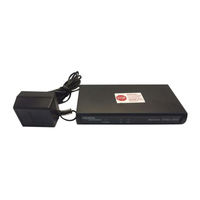Nortel BayStack 380 Ethernet Switch Manuals
Manuals and User Guides for Nortel BayStack 380 Ethernet Switch. We have 3 Nortel BayStack 380 Ethernet Switch manuals available for free PDF download: Reference Manual, Using Manual, Installing
Advertisement
Nortel BayStack 380 Reference Manual (252 pages)
Reference Guide for Enterprise Customers
Brand: Nortel
|
Category: Network Hardware
|
Size: 2 MB
Advertisement
Advertisement


